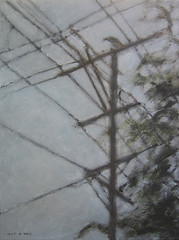
Tree Trunks in Gray Landscape
20" x 24"
Oil on Canvas
www.matthewfelixsun.com

 Following her critically acclaimed debut novel "Slipstream", Leslie Larson dived deep into the human condition. In the two passages Leslie read to an overflow crowd, she presented us an unflinching portrayal of an octogenarian who is sad, heartbroken, and indomitable. The book promises to be sincere, probing, serious, yet hilariously funny. I cannot wait to delve into this wonderful novel.
Following her critically acclaimed debut novel "Slipstream", Leslie Larson dived deep into the human condition. In the two passages Leslie read to an overflow crowd, she presented us an unflinching portrayal of an octogenarian who is sad, heartbroken, and indomitable. The book promises to be sincere, probing, serious, yet hilariously funny. I cannot wait to delve into this wonderful novel. The art world just learned a new mishap to a beloved artwork. According to New York Times, The Actor by Picasso in his Rose Period, was torn by a woman who fell onto the canvas. "Fortunately, the damage did not occur in a focal point of the composition," the Met said in a statement, adding that the damage can be fully repaired.
The art world just learned a new mishap to a beloved artwork. According to New York Times, The Actor by Picasso in his Rose Period, was torn by a woman who fell onto the canvas. "Fortunately, the damage did not occur in a focal point of the composition," the Met said in a statement, adding that the damage can be fully repaired.Clumsy visitors are accidentally damaging some of the nation's most prized exhibitsOops! Gallery art takes a battering
Jason Bennetto, Sunday 28 2008
Britain's art collections are taking a beating. Visitors to some of the nation's finest galleries and museums wreak havoc by walking into, leaning against, tripping over and even vomiting over valuable works, official records show.
The casualty list includes a chipped Anish Kapoor sculpture, a dented Barnett Newman painting, a vomit-stained Carl Andre piece and an installation at the Victoria & Albert Museum that was brought crashing to the ground when a security guard tripped over a barrier in the dark. In another incident, a huge 19th-century plaster cast was damaged by corporate clients clambering over it.
Details released under the Freedom of Information Act by the National Gallery, the Tate and the V&A, reveal that dozens of works have been dented, scratched, dropped and vandalised over the past five years. The culprits are not only malicious or clumsy visitors, but also partygoers, staff and removal men. The cost of accidents and vandalism is unknown because the galleries and museum declined, in most cases, to put a value on damage or repairs.
Information released by the Tate Collection reveals that a sculpture by one of its most controversial artists, the American Carl Andre, was the subject of an unpleasant accident. His 1980 work, Venus Forge, which resembles a long garden path made of bronze tiles, needed restoration work in 2007 because, as a Tate report put it: '[A] child vomited over some tiles forming part of his work.'
An oil painting, Adam, by Barnett Newman, the American artist who is considered to be one of the major figures in abstract expressionism, suffered two mishaps at Tate Modern. In the first, in October 2007, a visitor tripped and left his finger marks on the canvas and dented the picture. Three weeks later, a man also stumbled and 'pressed his hand against the canvas, leaving an imprint'.
An exhibit by the Turner Prize-winning sculptor Anish Kapoor was another victim of clumsiness. Kapoor's enormous, egg-like fibreglass structure, Ishi's Light 2003, was chipped when a cameraman struck it with his tripod last year.
It is not just accidental damage that the museums and galleries have to watch out for. A 19th-century plaster cast of the pulpit in Pisa Cathedral by the Italian sculptor Giovanni Pisano, and another plaster cast of Pisano's Virgin and Child, were found to have been harmed after a 'corporate event' at the V&A in South Kensington. The museum noted that the pulpit showed 'evidence of having been climbed by someone causing damage', while the Virgin and Child was 'knocked from pedestal causing breakage'.
Staff were the source of several incidents at the V&A. An installation called Mesh by the contemporary textile artist Sue Lawty, made of a hanging wall of thread tied around small pieces of coral, was demolished in 2006. The museum reported that '[a] security guard on patrol in closed hours entered darkened gallery and tripped on security barrier, pulling the installation down'. Reconstruction of the exhibit cost £448.90.
The 1755 porcelain figure group Leda and the Swan had an undignified accident in March 2007. The V&A reported: 'In placing the object into a basket, the head was accidentally knocked against a trolley frame and the head was knocked off.' The head has since been glued back on. In another mishap, a glass negative of a Beatrix Potter manuscript was accidentally knocked and broke in half.
Even the V&A has trouble with removal men. In 2007, a 1957 writing desk by Franz Ehrlich and a 1947 chair by Selman Selmanagic were damaged in transit. This included 'one table leg detached, another sprung from joints. Draw handles crushed, edges of desktop crushed and abraded. Upholstery of chair abraded and woodwork scratched'.
At the National Gallery in Trafalgar Square, a 16th-century painting by the Florentine artist, Agnolo Bronzino, An Allegory with Venus and Cupid, was dented in 2003 after being punched by a man. In January this year the painting Marcia by Domenico Beccafumi split in two as it was removed from the wall at the National Gallery.
Perhaps one of the most mysterious incidents is the V&A's missing teddy bears. In 2006 an installation featuring a 'teddy bear sofa' was taken down, but the V&A reported: 'Three teddy bears missing from sofa at close of deinstallation.' The museum paid €500 (£397) compensation for the toys.
Artistic Director and Principal Choreographer Helgi Tomasson’s Swan Lake, which debuted to sold-out houses last season, receives an encore presentation in 2010. Featuring lavish costumes and scenery and Tchaikovsky’s breathtaking score, this timeless story of transcendent love showcases the depth of the Company, from its principal dancers to the corps de ballet.The principal dancers are Yuan Yuan Tan, Casey Held (guest artist from Het National Ballet in Amsterdam) and Damian Smith, all proved elegant, powerful and expressive. Soloist Hansuke Yamamoto stepped in for principal dancer Vitor Luiz in the Peasant Pas de Trois and he and partners displayed an amazing bravura and playfulness. It seemed to me the biggest number of the afternoon, and seemed no other numbers lasted as long and the proportion of the ballet seemed strangely realigned. Cygnet episode was blessedly not too cute.
Tomasson's staging strips the mime passages down to the barest minimum. This withholding of motivation and suppression of context imparts a "greatest hits" aura to this "Swan Lake" that seems to rebuke the entire narrative tradition. Despite the fact that this version runs over 2 1/2 hours, it seems terribly rushed.All those said, I would not hesitate to recommend this production. The last performance will be at 2:00 pm on 31 January.
The performance dats are from 20 March through 28 March. Don't deny you the chance to see the ballet by the one of the most exciting living choreographers.Featuring an original commissioned score by renowned composer Lera Auerbach, Neumeier’s contemporary version of The Little Mermaid is a haunting tale of two divergent worlds: the serenity and simplicity of underwater life and the complex, often flamboyant lives of humans. The mermaid heroine travels through both worlds, enduring torment because of her committed love for a prince—but through her own strength in the end—transcends.
Please Note: This critically acclaimed production focuses on the deeper, mature themes of the original story and is not recommended for younger children.
Tamerlano is a work with penetrating intellect and great drama, while Cyrano, "is not a gret work".Domingo's return will mark his first performance in a staged opera since playing John the Baptist in Massenet's "Hérodiade," although he has made concert appearances since then. In a phone interview, General Director David Gockley said that "Cyrano" - a 1936 treatment of the Edmond Rostand play by a composer still best known for having completed Puccini's "Turandot" - was Domingo's idea.
He suggested that and Handel's 'Tamerlano,' " he said, "so I got on my horse and went to La Scala and saw 'Cyrano.'
"I was impressed. It's a pretty good work - not a great work - but I thought he did an extraordinary job of characterizing the title role. He sings it beautifully, both strength and sensitivity - and he sword fights well."

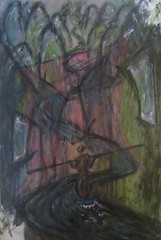
14. September
Der Gegenwind, der mich gestern in den Hafen von Malcesine trieb, bereitete mir ein gefährliches Abenteuer, welches ich mit gutem Humor überstand und in der Erinnerung lustig finde.
"The headwind, which drove me yesterday into the port of Malcesine, prepared me a dangerous adventure, which I endured with good humor and in the memory find amusing."
"The contrary wind which drove me yesterday into Malcesine harbour involved me in a dangerous adventure from which, thanks to keeping my temper, I emerged victorious and which highly amuses me in retrospect."Victorious was clearly Auden's interpretation of what Goethe felt but didn't write. I actually don't believe Goethe felt victorious at all.
"A translator, that is to say, has to assume that his readers cannot and never will be able to read the original. This, in its turn, implies that they are not specialists in his author. On the one hand, they probably know very little about him; on the other, their appetite for scholarly footnotes is probably small... The translator's most difficult problem is not what his author says but his tone of voice. How is a man who thought and wrote in German to think and write in English and yet remain a unique personality called Goethe? To offer a translation to the public is to claim that one does know how Goethe would have written had English been his native tongue, to claim, in fact, that one has mediumistic gifts, and, as we all know, mediums are often rather shady characters."He continued:
"If the translator has really understood his author, he will be able to evoke in his own mind not only what the author has done, but also what he wanted and ought to have done."W.H. Auden's treatise on translation is very interesting. I agree with his assertion that a translator ought to understand his author more deeply than what is conveyed by what has been written down. I also agree that it is vital to maintain the tone of the original voice. But I disagree strongly with the argument that a translation should be what the author would have written if the translated language were the author's native tongue. Instead, a good translation should be faithful to the idioms of the foreign language and the author's tone of voice, maintaining the structure of the sentences without rendering text unreadable. A tall order indeed. But it is achievable. The translator husband-and-wife team Richard Pevear and Larissa Volokhonsky set glorious examples with their scrupulously faithful translations of Tolstoy, Dostoyevsky, Chekhov, et. al.
San Francisco Chronicle Movie Critics Mick LaSalle has a column Ask Mick LaSalle. I read a fantastic reply he gave to a reader regarding introducing Star Wars to his child. I felt that I really need to publicize his reply:
Bravo, Mick!Dear Jedi Master Mick LaSalle: As someone who grew up with the first "Star Wars" trilogy, I'm not sure how to best introduce a child to the series. Would you start with Episode I or Episode IV? Any thoughts?
David Swope, Sausalito
Dear Jedi Master David Swope: My honest thought is to skip "Star Wars" altogether and avoid introducing a child to a lifetime of bad movies and a pattern of bad movie taste. Instead, get a child interested in Shakespeare. Show the child masterpieces of cinema. Get the child used to black and white.
If the child is old enough to read, get the child used to subtitles. Boys and girls have their whole lives to develop lousy pop culture taste, just through contact with other boys and girls. While their minds are still open and they still think you know a thing or two (as opposed to when they're teenagers and beyond the reach of reason), give them at least a grounding in the good stuff. It might work and it might not, but that grounding will be something for them to build on - and will be an amazing advantage over kids brought up on a steady diet of garbage.
However, if you really want to introduce a child to "Star Wars," start with "The Phantom Menace." It's so absolutely awful that the child might rebel against the whole project 20 minutes into the first movie.
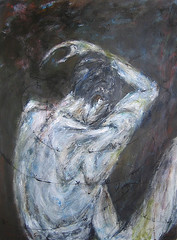

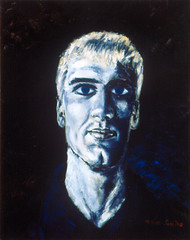
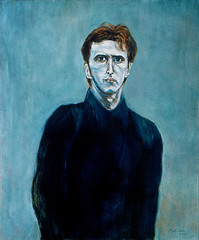

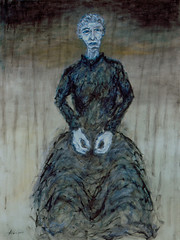
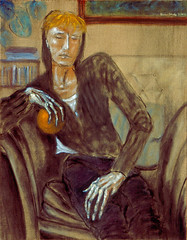

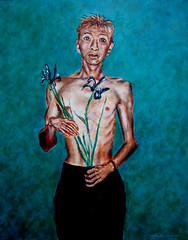






 San Francisco Chronicle reported that a new official portrait of Princes William and Harry of UK by artist Nicky Philipps was on display at the National Portrait Gallery alongside other royal portraits.
San Francisco Chronicle reported that a new official portrait of Princes William and Harry of UK by artist Nicky Philipps was on display at the National Portrait Gallery alongside other royal portraits.










 De Young Museum will bring masterpieces by impressionists (Birth of Impressionism) and post-impressionists (Van Gogh, Gauguin, Cézanne and Beyond) from Musée d'Orsay of Paris when it's under renovation. Impressionists exhibit will be on display from 22 May to 6 September while post-impressionists exhibit starts in 25 September and will end in 18 January 2011. I cannot wait to see these works again, hopefully, I'll be able to visit both exhibits more than once.
De Young Museum will bring masterpieces by impressionists (Birth of Impressionism) and post-impressionists (Van Gogh, Gauguin, Cézanne and Beyond) from Musée d'Orsay of Paris when it's under renovation. Impressionists exhibit will be on display from 22 May to 6 September while post-impressionists exhibit starts in 25 September and will end in 18 January 2011. I cannot wait to see these works again, hopefully, I'll be able to visit both exhibits more than once.








